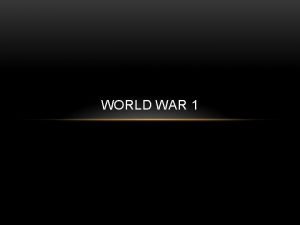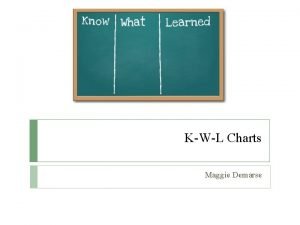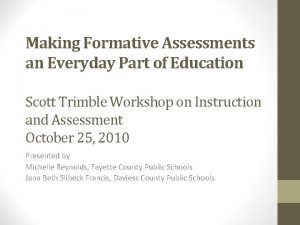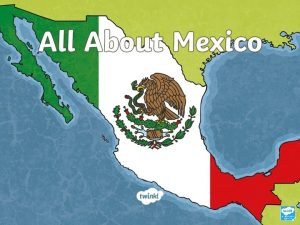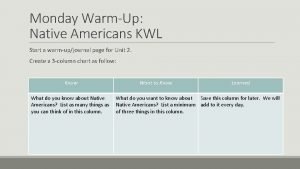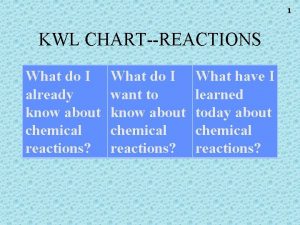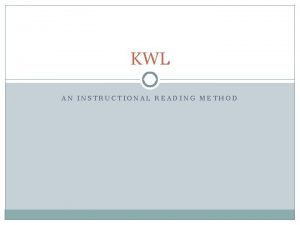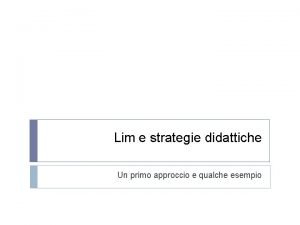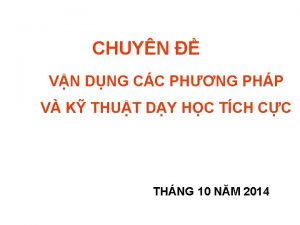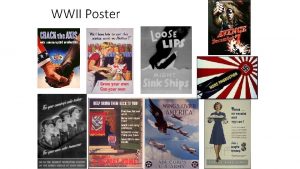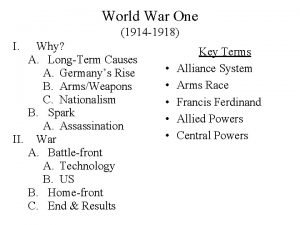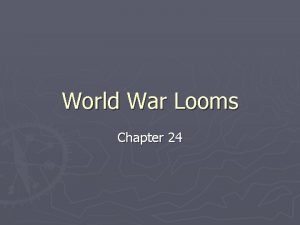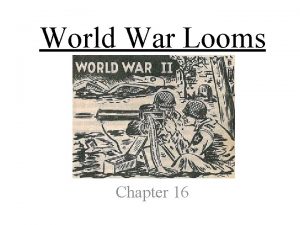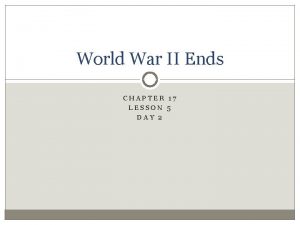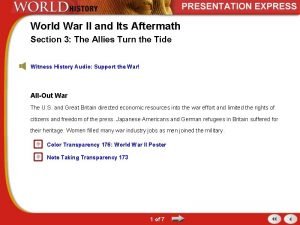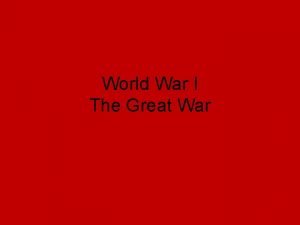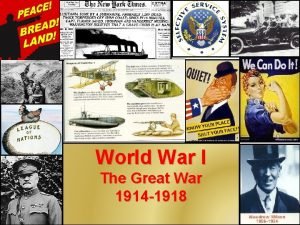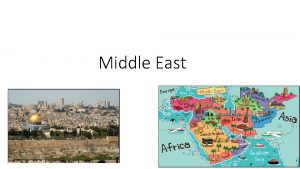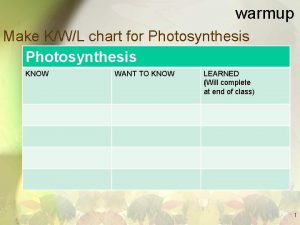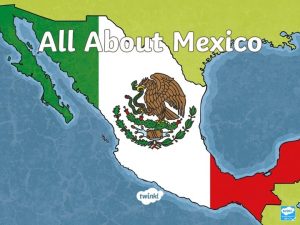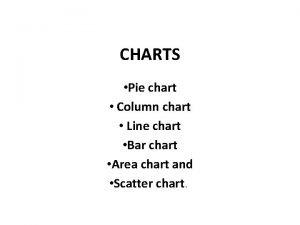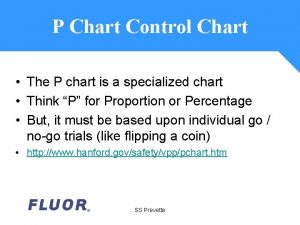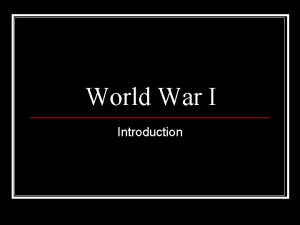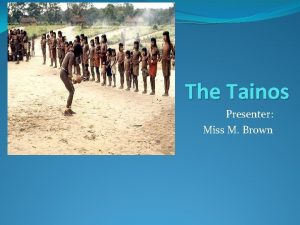WORLD WAR 1 KWL CHART Know Want to






















































- Slides: 54

WORLD WAR 1

KWL CHART Know Want to Know What you learned You must list 3 things you know about WWI 3 things you want to know about WWI 7 things you learned in the unit ( this will be take up with your test)

WORLD WAR 1 ( INTRODUCTION)

WORLD WAR 1 ESSENTIAL QUESTIONS • 1) How was industrialization linked to the long-term causes of WWI? • 2) What evidence is there to defend the assertion that WWI was not won in the trenches, but rather in the factories? • 3) Why was WWI and “new kind of war”? • 4) How did WWI impact the rest of the 20 th century?


WWI • World War I ( the great war) lasted form 1914 -1918 • Historians can easily pick out the “Smoking Gun” that started the war • Now lets look at what factors help build toward war………

CAUSES

DOWN GOES DUKE!!!! • In late June 1914, Archduke Franz Ferdinand his wife of Austria was assassinated by a Serbian nationalist in Sarajevo, Bosnia. ( Gavril Princip who was part of the black hand) • He was heir to the Austrian Throne • The assassination set off a chain of events that would lead to the start of World War I barely one month later.

DOWN GOES THE DUKE


THE DOMINO THEORY




BLANK CHECK • German leaders Give Austria Hungry a “blank check” • This said we will give you whatever you need. WE HAVE YOUR BACK!

JOURNAL • In your own words. Write a short journal (5 sentences) on what cause you believe was the biggest cause to starting WWI and why. • Homework: Read section one of chapter 13. Look up and define all key terms in section 1

EUROPE GOES TO WAR • Central Powers • Allies • Germany • Great Britain • Austria Hungry • France • Bulgaria • Russia • Ottoman Empire • Japan • Italy ( switch from central powers)

STALEMATE • The battles in France quickly turned into a stalemate. • No one side was winning or loosing





WESTERN FRONT • On August 4, 1914, German troops under Erich Ludendorff crossed the border into Belgium, in violation of that country's neutrality. • In the first battle of World War I, the Germans assaulted the heavily fortified city of Liege, using the most powerful weapons in their arsenal-enormous siege cannons--to capture the city by August 15.

WESTERN FRONT • In the First Battle of the Marne, fought from September 6 -9, 1914, French and British forces confronted the invading Germany army, which had by then penetrated deep into northeastern France, within 30 miles of Paris. Under the French commander Joseph Joffre, the Allied troops checked the German advance and mounted a successful counterattack, driving the Germans back to north of the Aisne River. • The defeat meant the end of German plans for a quick victory in France. Both sides dug into trenches, and began the bloody war of attrition that would characterize the next three years on World War I’s Western Front. Particularly long and costly battles in this campaign were fought at Verdun (February. December 1916) and the Somme (July-November 1916); German and French troops suffered close to a million casualties in the Battle of Verdun alone.

QUIZ • Answer questions on your guided notes for Day 2 • 1) Who was the Duke who got assonated? • 2) Name one cause of WWI • 3) What type of warfare was used most in WWI? • 4) What word was used to describe the first of WWI? • 5) What type of check did Germany issue before the start of the war? • 6) list 3 major allied powers?




EASTERN FRONT • On the Eastern Front of World War I, Russian forces invaded East Prussia and German Poland, but were stopped short by German and Austrian forces at the Battle of Tannenberg in late August 1914. Despite that victory, the Red Army assault had forced Germany to move two corps from the Western Front to the Eastern, contributing to the German loss in the Battle of the Marne. Combined with the fierce Allied resistance in France, the ability of Russia's huge war machine to mobilize relatively quickly in the east ensured a longer, more grueling conflict instead of the quick victory Germany had hoped to win with the Schlieffen Plan. • Over the next two years, the Russian army mounted several offensives on the Eastern Front but were unable to break through German lines. Defeat on the battlefield fed the growing discontent among the bulk of Russia's population, especially the poverty-stricken workers and peasants, and its hostility towards the imperial regime.

RUSSIAN REVOLUTION • This discontent culminated in the Russian Revolution of 1917, spearheaded by Vladimir Lenin and the Bolsheviks. One of Lenin's first actions as leader was to call a halt to Russian participation in World War I. Russia reached an armistice with the Central Powers in early December 1917, freeing German troops to face the other Allies on the Western Front.

GALLIPOLI CAMPAIGN (1915 -16) • With World War I having effectively settled into a stalemate in Europe, the Allies attempted to score a victory against the Ottoman Empire, which had entered the conflict on the side of the Central Powers in late 1914. After a failed attack on the Dardanelles (the strait linking the Sea of Marmara with the Aegean Sea), Allied forces led by Britain launched a large-scale land invasion of the Gallipoli Peninsula in April 1915. The invasion also proved a dismal failure, and in January 1916 Allied forces were forced to stage a full retreat from the shores of the peninsula, after suffering 250, 000 casualties.








AMERICA • American neutrality. When the war began, President Wilson quickly proclaimed the neutrality of the United States and called on the American people to be “impartial in thought as well as in action. ” Absolute neutrality was difficult to achieve. German Americans tended to support the Central Powers, while Irish Americans had strong animosity toward Great Britain, and recent Jewish immigrants from Eastern Europe wanted a Russian defeat. Moreover, investors in the United States provided billions of dollars in loans to the Allies, and the balance of American trade with the warring countries was overwhelmingly in favor of Great Britain and France. • Although the United States objected to the British blockade in the North Sea, a much greater threat to American neutrality was Germany's use of unrestricted submarine warfare against shipping in the North Atlantic. In May 1915, Germany sunk the British oceanliner Lusitania , causing the loss of almost 1, 200 lives, including 128 Americans.


USA ENTERS THE WAR • On April 2, 1917, President Woodrow Wilson went before a joint session of Congress to request a declaration of war against Germany. Wilson cited Germany’s violation of its pledge to suspend unrestricted submarine warfare in the North Atlantic and the Mediterranean, and its attempts to entice Mexico into an alliance against the United States, as his reasons for declaring war. On April 4, 1917, the U. S. Senate voted in support of the measure to declare war on Germany. The House concurred two days later. The United States later declared war on Austria-Hungary on December 7, 1917.

USA • Germany’s resumption of submarine attacks on passenger and merchant ships in 1917 was the primary motivation behind Wilson’s decision to lead the United States into World War I. Following the sinking of an unarmed French boat, the Sussex, in the English Channel in March 1916, Wilson had threatened to sever diplomatic relations with Germany, unless the German Government refrained from attacking all passenger ships, and allowed the crews of enemy merchant vessels to escape from their ships prior to any attack. On May 4, 1916, the German Government had accepted these terms and conditions in what came to be known as the “Sussex pledge. ”

USA • By January 1917, however, the situation in Germany had changed. During a wartime conference that month, representatives from the German navy convinced the military leadership and Kaiser Wilhelm II that a resumption of unrestricted submarine warfare could help defeat Great Britain within five months. German policymakers argued that they could violate the “Sussex pledge, ” because the United States could no longer be considered a neutral party after supplying munitions and financial assistance to the Allies • German Government decided to resume unrestricted submarine attacks on all Allied and neutral shipping within prescribed war zones, reckoning that German submarines would end the war long before the first American troopship arrived in Europe. • Stunned by the news, President Wilson went before Congress on February 3 to announce that he had severed diplomatic relations with Germany.

“ZIMMERMAN TELEGRAM” • While Wilson weighed his options regarding the submarine issue, he also had to address the question of Germany’s attempts to cement a secret alliance with Mexico. On January 19, 1917, British naval intelligence intercepted and decrypted a telegram sent by German Foreign Minister Arthur Zimmerman to the German Ambassador in Mexico City. The “Zimmerman Telegram” promised the Mexican Government that Germany would help Mexico recover the territory it had ceded to the United States following the Mexican-American War. In return for this assistance, the Germans asked for Mexican support in the war. • The British had initially not shared the news of the Zimmerman Telegram with U. S. officials, because they did not want the Germans to discover that British code breakers had cracked the German code. However, following Germany’s resumption of unrestricted submarine warfare in February, the British decided to use the note to help sway American official and public opinion to join the war. The British finally forwarded the intercept to Wilson on February 24. The American press carried the story the following week.

USA • The weakened condition of the Allied forces in the spring of 1917 made it clear that the United States would have to provide more troops than perhaps originally anticipated. In May, the Selective Service Act was passed, which made all men between the ages of 21 and 30 eligible for the draft; the age range was soon expanded to 18 to 45. Of the almost 5 million men who served in the military during World War I, 2. 8 million were drafted. A total of 1. 4 million Americans saw combat.

THE END OF THE WAR • With Germany able to build up its strength on the Western Front after the armistice with Russia, Allied troops struggled to hold off another German offensive until promised reinforcements from the United States were able to arrive. • On July 15, 1918, German troops under Erich von Ludendorff launched what would become the last German offensive of the war, attacking French forces (joined by 85, 000 American troops as well as some of the British Expeditionary Force) in the Second Battle of the Marne.

THE END OF THE WAR • After suffering massive casualties, Ludendorff was forced to call off a planned German offensive further north, in the Flanders region stretching between France and Belgium, which he had envisioned as Germany's best hope of victory • The Second Battle of the Marne turned the tide of war decisively towards the Allies, who were able to regain much of France and Belgium in the months that followed. • By the fall of 1918, the Central Powers were unraveling on all fronts. Despite the Turkish victory at Gallipoli, later defeats by invading forces and an Arab revolt had combined to destroy the Ottoman economy and devastate its land, and the Turks signed a treaty with the Allies in late October 1918. • Austria-Hungary, dissolving from within due to growing nationalist movements among its diverse population, reached an armistice on November 4. Facing dwindling resources on the battlefield, discontent on the home front and the surrender of its allies, Germany was finally forced to seek an armistice on November 11, 1918, ending World War

WORLD WAR 1 LEGACY • World War I took the life of more than 9 million soldiers; 21 million more were wounded. Civilian casualties caused indirectly by the war numbered close to 10 million. The two nations most affected were Germany and France, each of which sent some 80 percent of their male populations between the ages of 15 and 49 into battle. The war also marked the fall of four imperial dynasties--Germany, Austria-Hungary, Russia and Turkey. • At the peace conference in Paris in 1919, Allied leaders would state their desire to build a post-war world that would safeguard itself against future conflicts of such devastating scale. The Versailles Treaty, signed on June 28, 1919, would not achieve this objective. Saddled with war guilt and heavy reparations and denied entrance into the League of Nations, Germany felt tricked into signing the treaty, having believed any peace would be a "peace without victory" as put forward by Wilson in his famous Fourteen Points speech of January 1918. As the years passed, hatred of the Versailles treaty and its authors settled into a smoldering resentment in Germany that would, two decades later, be counted among the causes of World War II.

14 POINTS In an address before a joint meeting of Congress, U. S. President. Woodrow Wilson discusses the aims of the United States in World War I and outlines his "14 Points" for achieving a lasting peace in Europe. The peace proposal called for unselfish peace terms from the victorious Allies, the restoration of territories conquered during the war, the right to national self-determination, and the establishment of a postwar world body to resolve future conflict. The speech was translated and distributed to the soldiers and citizens of Germany and Austria-Hungary and contributed significantly to their agreeing to an armistice in November 1918. After the war ended, Wilson traveled to France, where he headed the American delegation to the conference at Versailles. Functioning as the moral leader of the Allies, Wilson struggled to orchestrate a just peace, though the other victorious Allies opposed most of his 14 Points. The final treaty called for stiff reparations payments from the former Central Powers and other demanding peace terms that would contribute to the outbreak on World War II two decades later. However, Wilson's ideas on national self-determination and a postwar world body were embodied in the treaty. In 1920, he was awarded the Nobel Peace Price for his efforts.

ACTIVITY • read pages 424 -427 in the text. Then as a group they will answer the following questions. 1) Which nations made the most decisions about the terms of peace? 2) How did Great Brittan and France feel about Germany? Why? 3) What was article 213? 4) What were mandated territories? 5) Why might the mandated territories feel resentful?

NEW WAYS TO FIGHTHTTP: //WWW. HISTORY. COM/TOPI CS/WORLD-WAR-I/VIDEOS - WWI-FIRSTS



GROUP WORK • You are now split up in to 5 groups • You will research your given topic ( Machine Gun, Gas, Tank, Airplane , Submarine) • Use your technology in your group to look up how this technology was used in WWI
 Airplane wwi
Airplane wwi Kwl chart benefits
Kwl chart benefits Kwl formative assessment
Kwl formative assessment Kwl chart in spanish
Kwl chart in spanish Kwl chart stereotypes
Kwl chart stereotypes Avid kwl chart
Avid kwl chart Kwl chart chemical formula
Kwl chart chemical formula Pollution kwl
Pollution kwl Kwl chart
Kwl chart Akwl
Akwl Kwl chart definition
Kwl chart definition Kwl chart properties of matter
Kwl chart properties of matter Kwl chart google doc
Kwl chart google doc Inquiring minds want to know
Inquiring minds want to know Drench my soul as mercy and grace unfolded
Drench my soul as mercy and grace unfolded Curious minds want to know
Curious minds want to know Curious minds want to know
Curious minds want to know Who said it
Who said it I want to know something about
I want to know something about Know history know self
Know history know self Do deep generative models know what they don’t know?
Do deep generative models know what they don’t know? I'm holding on to your promises you are faithful
I'm holding on to your promises you are faithful Was john bradford pro war or anti war
Was john bradford pro war or anti war Rt reading
Rt reading Kwl sheet
Kwl sheet Kwl şeması nedir
Kwl şeması nedir Kwl reading method
Kwl reading method Kwl framework
Kwl framework Metodologie didattiche schema
Metodologie didattiche schema Kĩ thuật kwl
Kĩ thuật kwl Tecnica kwl
Tecnica kwl The greatest want of the world
The greatest want of the world The greatest want of the world
The greatest want of the world What challenges did madison face abroad
What challenges did madison face abroad Korean war vietnam war venn diagram
Korean war vietnam war venn diagram The cold war lesson 1
The cold war lesson 1 Truman vs eisenhower venn diagram
Truman vs eisenhower venn diagram War warst war
War warst war Contact force examples
Contact force examples Why was the civil war considered the first modern war
Why was the civil war considered the first modern war Ich war du warst er war
Ich war du warst er war Toward civil war lesson 3 secession and war
Toward civil war lesson 3 secession and war Proxy war cold war definition
Proxy war cold war definition Chapter 30 the war to end war
Chapter 30 the war to end war Chapter 30 the war to end war
Chapter 30 the war to end war Bandwagon propaganda pictures
Bandwagon propaganda pictures Results of the world war 1
Results of the world war 1 Chapter 16 building vocabulary world war looms
Chapter 16 building vocabulary world war looms Chapter 16 world war looms vocabulary
Chapter 16 world war looms vocabulary Lesson 5 world war ii ends
Lesson 5 world war ii ends World war 2 and its aftermath section 1 quiz
World war 2 and its aftermath section 1 quiz What was the immediate cause of world war i brainpop
What was the immediate cause of world war i brainpop World war 1 and the russian revolution chapter 27
World war 1 and the russian revolution chapter 27 World war 1 participants
World war 1 participants 4 causes of ww1
4 causes of ww1
